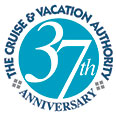Insiders guide to cruising Europe
Advice, tips, tricks and, most importantly, lessons learned By Carolyn Spencer Brown
It's no secret that cruising is an exceptional way to see Europe. First of all, seeing Europe by cruise is cheaper than touring by land.
Cruise fares typically cover accommodations, meals in main dining venues, kids club activities and entertainment, from enrichment classes to theatrical performances (though it's important to note the extras, such as spa treatments, meals in boutique restaurants, fitness classes, casino gambling and cocktails and specialty drinks).
And don't forget, too, that cruise fares include the cost of transportation between ports. On any given voyage, you'll visit a variety of European cities (in some cases covering three or more countries). Some cruises combine two regions (such as Western Europe and the Baltic or the Eastern and Western Mediterranean). Most include what we classify as the greatest hits cities of Europe (such as Civitavecchia for Rome, Venice, Stockholm, Barcelona and Piraeus for Athens); some of these also offer tantalizing tastes of lesser-known places (including Tunisia's Tunis, Malta's Valletta and Estonia's Tallinn).
However, this pro can also be a con. Yes, European cruises cover a lot of ground on one trip and offer great value but at the same time, you can only cover so much ground before suffering from vacation burnout! My first European cruise, a Western Mediterranean voyage onboard MSC Orchestra, was easily my most intensive sightseeing experience ever literally a port-after-port affair with no sea days. Sure, other cruise regions are also rich in history, but let's face it if you spent a few days lazing on the beach and bypassing Caribbean museums and landmarks, you wouldn't feel as guilty as you would if you missed out on the ruins at Pompeii or the Louvre in Paris.
There are other challenges, too. Europe is huge, so there are a great many itineraries from which to choose. It can seem daunting if you don't know where to start. Europe's main regions include Northern Europe (Norway's fjords and the Baltic); Western Europe (England, Atlantic France, the Netherlands, Germany and Belgium), and the Mediterranean. In fact, the Mediterranean is so vast that it's actually divided into two regions for cruise: Eastern, which focuses on the Greek Isles and Turkey, and Western, which includes Italy, Spain and France. Some itineraries focus strictly on one region; others blend ports in the two. More specifically:
Western Mediterranean: These itineraries focus on Italy's west coast (with stops that service cities like Rome and Florence), France's glittering Cote d'Azur, coastal Spain (from Barcelona all the way east to Cadiz/Seville and Gibraltar) and Portugal (Lisbon).
Eastern Mediterranean: These voyages typically revolve around the Greek Isles but also include Turkish ports like Istanbul, Izmir and Kusadasi, stops at Croatia's Hvar and Dubrovnik, and even Italy's Venice.
British Isles and Western Europe: On these cruises, you'll sail to places like Belgium (Brugge/Brussels), Amsterdam, Dublin, Edinburgh, Paris/Normandy and Hamburg. The most common embarkation point is London (Dover, Harwich, Southampton and Tower Bridge). Also, these cruises do commonly call on ports from other regions, such as the Western Mediterranean and Northern Europe.
Baltic and Northern Europe: There are two distinctly different types of itineraries in Northern Europe. The first is Norway's west coast, the gateway to the Norwegian fjords and increasingly popular ports in Iceland, Greenland and the Faroes. Cruises often embark/disembark from Copenhagen or London. The second is the Baltic region, one of Europe's major centers of art, culture and history; key destinations there include Stockholm, Helsinki, St. Petersburg and Copenhagen. Common turnaround ports include London, Copenhagen and Stockholm.
Once you've nailed down your perfect itinerary, how do you make it work for you? Read on for our "insider's guide" advice, tips, tricks and, most importantly, lessons learned on our own European cruises.
1. Just say no to traveler's guilt
With a few exceptions (cruise lines often offer overnights in Venice and St. Petersburg), you'll only have a day in each destination. And a day per port is by no means enough time to see anything, much less everything! The best way to stay sane is to treat each day as a "sampler" if you like the port, plan to return for a lengthier stay another time. And if you don't (and trust us, there will be ports that don't ring your chimes) the good news is you haven't invested time and money in a long and expensive visit. There's no room for remorse on vacation; if you're tired of museums and want to have a long lunch at a sidewalk cafe just do it; that's a great experience too.
2. Give yourself a break
When shopping for a specific cruise, look carefully at the itinerary to see if there are any days at sea. You will appreciate the occasional "day off" between bouts of frantic sightseeing in port.
3. Shake things up
that same vein, it's smart to strategize your sightseeing by varying activities. If Paris, Brussels and Amsterdam are on the docket three days in a row, intensive city tours in each place will be overwhelming (and become monotonous). Look for the occasional laid-back alternative: in Belgium, why not visit the medieval city of Brugge instead of Brussels? If you are calling on La Havre but Paris doesn't appeal, take advantage of the port's proximity to other major attractions in France, such as the gorgeous Normandy region or the charming fishing village of Honfleur.
The Baltic is another region where it's a good idea to switch exploratory gears because many of the Scandinavian cities, at least at a first glance, feel somewhat similar. Take a walking tour of Oslo, kayak the canals in Copenhagen, embark on a daring fast boat ride through Helsinki's waterways, and cafe-hop in easy-to-maneuver Stockholm.
4. Wear comfortable shoes
Pack several pairs and plan on walking a lot. Those charming cobblestone streets (ubiquitous throughout Europe) are hard on feet.
5. Consider timing
Seasonal timing is important in choosing the right trip. Hate crowds, but don't mind mercurial weather? Plan to sail April through early June or September and October (fares also tend to be lower then). If you're limited to school holiday times, try for late June to early July but be aware you won't be alone. Oddly, July and August, prime months to visit Europe's ports, can be dicey, too; many European restaurants and even attractions may be shut down for annual vacations.
6. Winter's the new hot time to cruise the Mediterranean
In a relatively new trend, a handful of cruise lines, such as MSC, Costa, Fred. Olsen, and Royal Caribbean, are promoting winter cruises in the Mediterranean but these ships don't spend much time in the usual ports. Instead, southerly places such as the Canary Island's Tenerife and Lanzarote, Portugal's Madeira, and Morocco's Tangier are on the itinerary (other possibilities include Malta, Tunisia, and Egypt's Alexandria). While travelers may need to pack a sweater and a raincoat, weather at these ports is generally pleasant year-round and crowds are nil.
7. Take the whole clan
Family cruising is enjoying huge popularity in Europe as lines like Carnival, P&O Cruises, Royal Caribbean, Princess, Ocean Village and NCL all offer kid-friendly trips. These offer a balance of kids' programs onboard and free-time on shore so families can explore ports together.
8. Plan ahead for St. Petersburg
Making that once-in-a-lifetime trek to St. Petersburg and want to explore the city independently? Beware of the visa issue. Russia requires U.S. citizens to obtain a visa in order to wander the streets (an exception applies to those booked on ship-sponsored excursions or through independent tour operators with the appropriate registration), and you must obtain it in advance of your trip (you will not be allowed off the dock without it). The cruise line has little incentive to help passengers on this issue because, of course, they profit much more if travelers buy their shore excursions and, perversely, the cruise lines usually supply the forms with your travel documents, which often arrive fairly close to your departure date.
The cost of a visa ranges from $131 to $300 (depending on whether your turnaround time is two weeks or overnight), and it must be obtained from the Russian embassy or a Russian consulate. You might also consider a visa service, such as Zierer. There is an extra fee, but in this case the fee may well be worth it because the qualifications are very exacting. You will need to submit two passport photos. For more info: www.visittorussia.com.
Independent tour operators with the appropriate registration can provide customers with an "invitation" (also known as sponsorship) if you book in advance (allow at least two weeks). We tried that on our last visit and had a wonderful experience with Red October (www.redoctober.us), one of St. Petersburg's best-known tour companies.
9. Shop smart
Looking for special souvenirs? Head for the supermarket and shop like a local. Great buys can be found on everything from locally made ceramics (Stockholm) to wine (France and Italy) to chocolate (Belgium), and you'll spend far less than at touristy shops. Another great spot is a local department store, for fashions and home furnishings like distinctive candlesticks and vases (we love Stockmann in Helsinki and El Corte Ingles). Many cities have upscale handicraft boutiques for discerning (and generally quite affordable) "art." If you are buying tourist trinkets, do try to nab them at the destination. Cruise ship gift shops may stock a limited supply of items but you won't get a terrific selection or price.
Beware of shopping for items like pirated CD's and DVD's (huge in St. Petersburg) and Cuban cigars that are illegal to bring back into the U.S.
10. Decide when to go out on your own ... and when to stick to shore tours
It's the independent-minded travelers' conundrum: when you should book ship-organized shore excursions vs. when it's more fun (and cheaper) to explore on your own. Some of the most interesting European destinations are located a fair distance, anywhere from an hour to three hours' drive, from the port itself: Le Havre (Paris), Civitavecchia (Rome), Livorno (Florence/Pisa), Dover, Harwich and Southampton (London), and Cadiz (Seville). In these ports, cruise lines offer basic bus transportation to the main city; this is a good idea because, should the bus return late to the dock, the ship will wait for you.
Another time when shore excursions can be a good idea is in a place where the language and customs are utterly foreign; in this instance, we recommend taking a ship tour (or an excursion arranged through an independent operator) at least the first day in St. Petersburg (if not both days). Easy ports for independent exploration include Stockholm, Helsinki, Oslo and Copenhagen; all have very sophisticated tourism offices that provide as much information historic or cultural as you'd probably get from a tour guide, and are very walkable cities. Venice, Dubrovnik and Brugge are also good do-it-yourself destinations -- easy to navigate and understand.
11. Take the bus (or train, or boat ...)
Europe has a terrific mass transportation infrastructure trains, buses, boats that makes renting a car, unless you are venturing somewhere really out of the way, completely unnecessary. In most cases, mass transit extends to major port areas, or cruise lines offer shuttle service to the nearest train station.

With each issue of Ultimate Experiences Online, you’ll enjoy a collection of articles, slideshows and videos that we will inspire you to make your travel dreams a reality.

To help you discover ways to explore the world, we're pleased to share our The Travel Magazine Online.
 Save money and escape the crowds. Hot Deals and multi-port packages. Savings of up to 50%!
Save money and escape the crowds. Hot Deals and multi-port packages. Savings of up to 50%!

Our free app that allows you to carry all of the destination information you need while traveling, right in your pocket!

We recommend optional travel insurance that protects you in the event of having to cancel your trip avoiding travel vendor cancellation policies and more!





